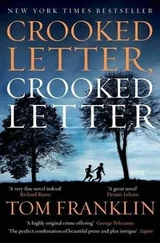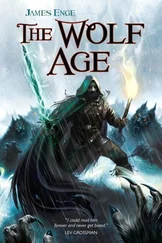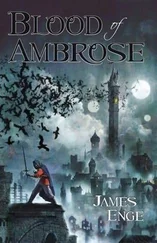The period of Chariot (the largest moon, whose rising and setting marks the seasons) is 187.5 days. (So a season is 93.75 days.)
The period of Horseman is 50 days.
The period of Trumpeter is 15 days. A half-cycle of Trumpeter is a "call." Calls are either "bright" or "dark" depending on whether Trumpeter is aloft or not. (Usage: "He doesn't expect to be back until next bright call.")
The seasons are not irregular, as on Earth. But the moons' motion is not uniform through the sky: motion is faster near the horizons, slowest at the zenith. Astronomical objects are brighter in the west, dimmer in the east.
The three moons and the sun rise in the west and set in the east. The stars have a different motion entirely, rotating NWSE around a celestial pole. The pole points at a different constellation among a group of seven (the polar constellations) each year. (Hence, a different group of nonpolar constellations is visible near the horizons each year.) This seven-year cycle (the Ring) is the basis for dating, with individual years within it named for their particular polar constellations.
The Polar constellations are: the Reaper, the Ship, the Hunter, the Door, the Kneeling Man, the River, the Wolf.
There is an intrapolar constellation, the Hands, within the space inscribed by the motion of the pole.
This calendar was first developed in the Wardlands, and then spread to the unguarded lands by exiles. In the Wardlands, years are dated from the founding of New Moorhope, the center of learning. The action of This Crooked Way begins in the 464th Ring, Moorhope year 3245, the Year of the River. But in the Ontilian Empire, the years are dated from the death of Uthar the Great, a system that came into widespread use north and south of the Kirach Kund.
2. THE VEAR OF THIS CROOKED GUAM
The novel begins early in the month of Brenting, 333 A.U.
48th Ring, A.U. 333: Year of the River
1. Cymbals.
New Year. Winter begins.
1st: Chariot, Horseman, and Trumpeter all set.
8th & 23rd: Trumpeter rises.
2. jaric.
1st: Horseman rises. 13th: Trumpeter rises.
3. Breij ip~.
1st: Horseman sets. 3rd and 18th: Trumpeter rises.
4. Drums.
1st: Horseman rises. 8th and 23rd: Trumpeter rises. Midnight of 94th day of the year (19 Drums): Chariot rises. Spring begins.
5. Rain.
1st: Horseman sets. 13th: Trumpeter rises.
6. Marryitjg.
1st: Horseman rises. 3rd and 18th: Trumpeter rises.
7. Ambrose.
1st: Horseman sets. 8th and 23rd: Trumpeter rises.
8. Harps.
1st: Horseman rises. 13th: Trumpeter rises. Evening of the 188th day of year (19 Harps): Chariot sets; Midyear-Summer begins.
9. Tort
1st: Horseman sets. 3rd and 18th: Trumpeter rises.
10. Rememberiv .
1st: Horseman rises. 8th and 23rd: Trumpeter rises.
11. Vicjory.
1st: Horseman sets. 13th: Trumpeter rises.
12. Harvesli1g.
1st: Horseman rises. 3rd and 18th: Trumpeter rises.
6th: Chariot rises, noon of 281st day of year. Fall begins.
13. Mojljer and Maider).
1st: Horseman sets. 8th and 23rd: Trumpeter rises.
14. Bayrin..
1st: Horseman rises. 13th: Trumpeter rises.
15. Borderer.
1st: Horseman sets. 3rd and 18th: Trumpeter rises.
APPENDIX B
SOURCE5 AND BACKGROUNDS FOR AMBROSIAN LEGEND
When the Allied forces firebombed Dresden in 1945, their real target was, of course, the Dresden Museum of Occult Antiquities, the infamous Ubersinnlichaltertumswissenschaft- museum, which was believed to be the site of the Axis magical weapons research program. Destruction of the central complex was so complete that we will never know whether the fear was justified.
Because it was considered bizarre and questionable even by that institution's unusual standards, the Von Brauch collection had long been exiled to a basement storage facility off the main site. For that and other fortuitous reasons, a significant amount of the collection survived, including an almost undamaged holograph copy of Von Brauch's so-called Gray Book (Liber Glaucus), which until recently was our best source of information about the sorcerous Ambrosii.
I actually had the chance to see this codex when the museum reopened to the public a few years ago. Note taking, or any kind of image making, is forbidden by the curator. (Supposedly this is for the safety of the visitors: "a little knowledge is a dangerous thing" etc.; more likely it's so that the museum can sell copyrighted images in its splendid gift shop.) But, while a docent was distracted, I managed to scratch out an awkward version of Von Brauch's manuscript map of the continent of Laent-a map which has never, as far as I know, been published. This sketch was used by the talented Chuck Lukacs to create the map that adorns this book.
But I can't, and don't wish to, deny that most of my knowledge of Von Brauch comes from the magisterial edition with commentary by H. N. Emrys (Amsterdam, 1967), the capstone of a career devoted to the Ambrosian legends. Emrys took some criticism for her agnostic approach to the so-called authenticity question-whether these legends represent an actual tradition of storytelling about Merlin's family or whether they were the mere inventions of a pseudonymous fantasist. (No principality of "Brauch" has been discovered on the map of Germany, and it looks as if Von Brauch, like many of those-who-know, operated under a nom de guerre.) Folklorists will long remember Corvino's searing review of Emrys' lifework, comparing her stance on the "authenticity question" to Jung's tacit endorsement of UFOlogy.
Emrys's vindication was a long time coming, but nowadays her agnosticism seems almost too conservative. With Gabriel McNally's publication of a rich selection of Khroic ekshal (Minneapolis, 2000), with translations and a theoretical framework of tonal notations, we can now be certain there are not only one but several independent traditions of storytelling about the Ambrosii. The "authenticity question" has now been replaced by the "historicity question"-that is, "Do the Ambrosian stories contain some core of historical fact (like the Trojan War legends) or are they purely imaginary?" It's an interesting issue, one I don't propose to address (since my interests are more mythographic than historical), except to point out how rare purity is.
The legendary material we have falls into three groupings, which naturally have some overlap:
1. Stories about Merlin Ambrosius, particularly before he becomes entangled in the history of Britain.
2. Stories about Ambrosia Viviana, and her rise to power over a significant portion of Laent. (Stories about Merlin and Nimue's other daughter, Hope Nimuelle, are less common, for obvious reasons.)
3. Stories about Morlock Ambrosius, the so-called master of all makers. It's this third group that is the most various and the most problematic. In some, he is a helpless drunk. In some, he is merely a cardboard villain-Richard III without the charm. In some, he is improbably (almost tediously) noble. The Khroi incorporated him into their malefic angelology. Old Danish stories tell about his confrontation with Wayland Smith. The Canterbury recension of Mandeville's Travels includes a description of his workshop which is as ingenious as it is implausible.
These stories may each work (or not work) on their own, but they don't work together. It's not a question of historicity-I again waive any discussion of whether the stories are "true." It's that they don't cohere. In a small way, the traditions about Morlock resemble those about Hercules: they can't be stitched together to create a mythic biography (as can be done for Perseus, for instance, or Hrolf Kraki, or Atalanta, or many another legendary hero). So, in representing some of these legends in fictional form, I am not attempting to create a prose epic about Morlock, a multivolume Morlockiad. (Folklorists will recall the sad case of C. Linwood, who hysterically insisted that no reviews be made of his "eikosapentalogy" based on the legends of Uthar the Great until the twenty-fifth and final volume of the work was complete. He died before the project was more than a quarter finished, and today the work is almost unknown.) I'm just trying to tell some of the Morlock tales that are interesting, in ways that suit the particular story (or set of stories).
Читать дальше












